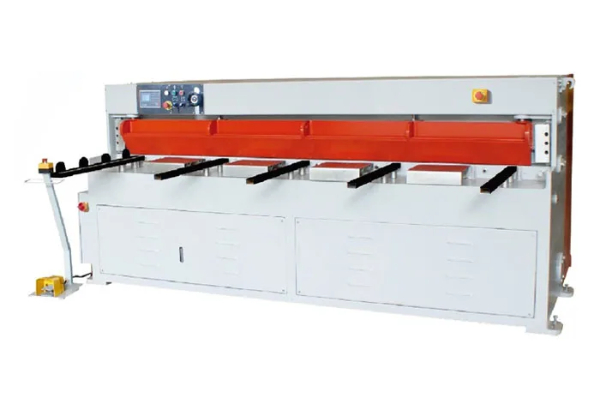
From Flat to Formed- Understanding Plate Bender Machine Technology
- By:Metmac
- 2024-05-06
- 328
From Flat to Formed: Unveiling the Mastery of Plate Bender Machines
In the realm of metal fabrication, plate bending machines stand as indispensable tools, transforming flat metal sheets into complex, shaped components. The article “From Flat to Formed: Understanding Plate Bender Machine Technology” delves into the intricacies of these machines, shedding light on their capabilities and the principles that guide their operation. By understanding the technology behind plate bender machines, manufacturers can harness their power to produce intricate and precise metal fabrications.
Anatomy of a Plate Bender Machine
Plate bender machines comprise a robust frame that houses a series of rollers, each playing a specific role in the bending process. The main bending roller, typically driven by a hydraulic cylinder, applies pressure to the workpiece, forcing it to conform to the desired curvature. Supporting side rollers ensure proper alignment and prevent the workpiece from buckling. Other components, such as a back gauge and control system, enable precise positioning and bending angles.
Types of Bending Operations
Plate bender machines perform various bending operations, catering to diverse fabrication needs.
Roll Bending
Roll bending is the most common technique, where the workpiece is passed between the main and side rollers, creating a continuous, cylindrical bend.
Edge Bending
Edge bending involves forming a bend along the edge of the workpiece, creating a precise angle or radius.
Flanging
Flanging produces a curved lip or ridge at the edge of the workpiece, often used for structural reinforcement or aesthetic purposes.
Coning
Coning involves bending the workpiece into a conical shape, utilized in applications such as ductwork and storage vessels.
Factors Influencing Bending Quality
Several factors contribute to the quality of bends produced by plate bender machines.
Material Properties
The material’s thickness, strength, and elongation at break influence the bending radius and bending force required.
Roll Configuration
The diameter and spacing of the bending rollers affect the bending radius and the ability to handle different thicknesses and widths of material.
Bending Speed
The bending speed directly impacts the accuracy and consistency of the bend. Faster speeds can lead to distortions, while slower speeds ensure better control.
Technological Advancements
Advancements in plate bending machine technology have enhanced their capabilities and efficiency.
CNC Control
Computer numerical control (CNC) systems enable precise control over bending parameters, including angle, radius, and speed, resulting in greater accuracy.
Automation
Automation features, such as automatic loading and unloading, reduce labor requirements and increase productivity.
Improved Safety Features
Modern plate bender machines incorporate safety features such as guarding, emergency stop buttons, and overload protection to ensure operator safety.
Conclusion
Plate bender machines are versatile and indispensable tools in the metal fabrication industry, transforming flat metal sheets into complex shapes with precision and efficiency. By understanding the anatomy, types of bending operations, influencing factors, and technological advancements associated with plate bender machines, manufacturers can unlock their full potential and produce high-quality, custom-shaped metal components for a wide range of applications.
-
Advanced Sheet Metal Rolling, Cutting, and Folding Machines for Efficient Fabrication
2025/10/22 -
High-Precision Sheet Metal Bending and Cutting Solutions for Modern Manufacturing
2025/10/22 -
High-Precision Solutions from Leading Sheet Metal Cutting Machine Manufacturers
2025/09/11 -
Reliable Sheet Metal Equipment for Sale to Support Precision Fabrication
2025/07/17
-
Advanced Sheet Metal Rolling, Laser Cutting, and Folding Machines for Precision Fabrication
2025/10/31 -
High-Performance Sheet Metal Bending and Cutting Machines for Modern Fabrication
2025/10/31 -
High-Quality Sheet Metal Equipment for Sale: Efficient Solutions for Modern Manufacturing
2025/10/31 -
High-Performance Sheet Metal Equipment for Sale: Forming and Shearing Solutions for Modern Fabrication
2025/10/22
-
Improving Accuracy in Metal Fabrication with Laser Metal Shear Machines
2024/05/11 -
Latest Technological Advancements in Rectangular Duct Machines
2024/05/11 -
Integrating Automation with Rectangular Duct Machines for Enhanced Productivity
2024/05/11 -
Metal Shear Machines- Essential Tools for Precision Metal Cutting
2024/05/11
-
A Guide to the Latest Innovations in Sheet Metal Folding Machines
2024/11/29 -
Key Features to Consider When Investing in a Sheet Metal Folding Machine
2024/11/28 -
Enhancing Precision with Advanced Sheet Metal Folding Machines
2024/11/27 -
How to Choose the Right Sheet Metal Folding Machine for Your Workshop
2024/11/26






